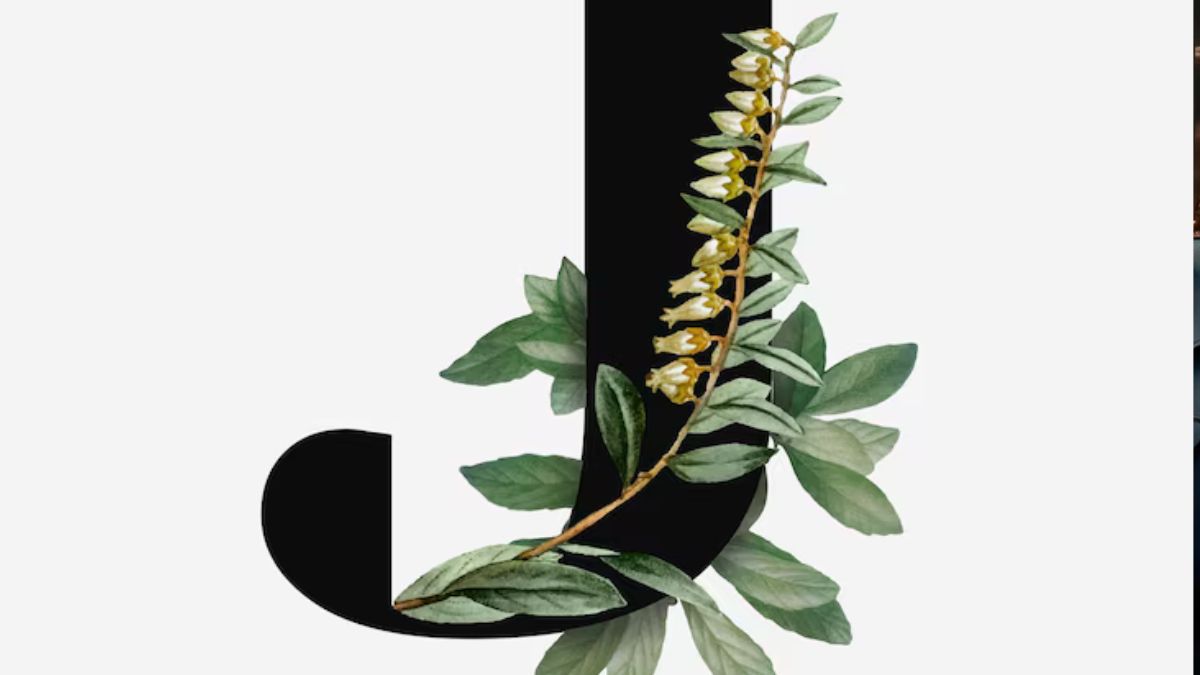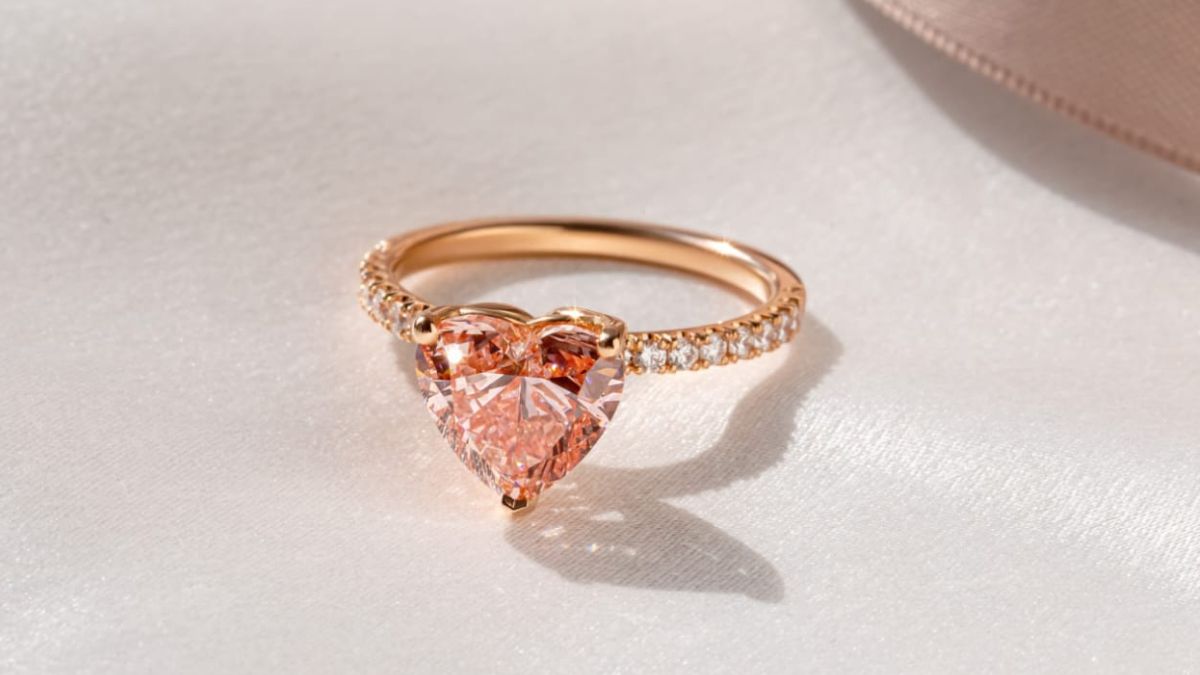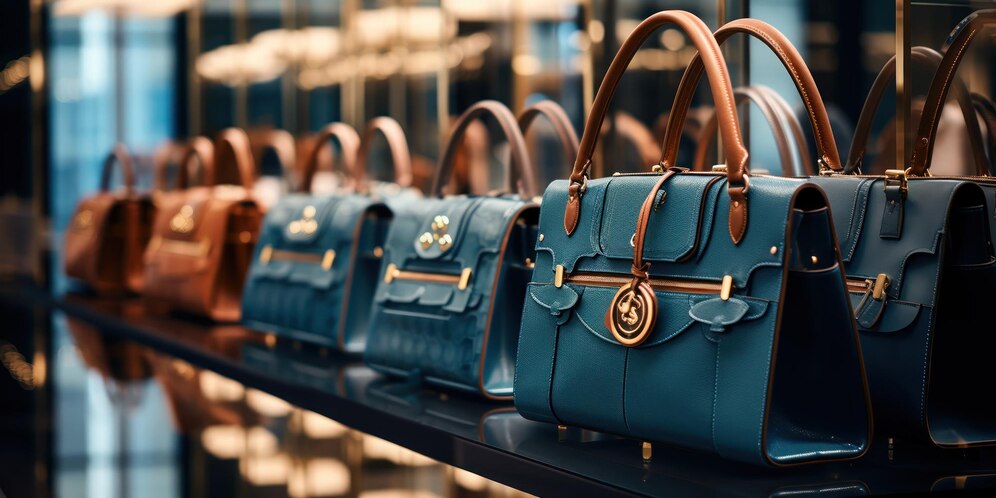FASHION
J Hagen Thysse Design: The Timeless Elegance of J Hagen Thysse Design You Need to Know

When it comes to interior design, few names resonate with as much elegance and timeless appeal as J Hagen Thysse. Whether you are an enthusiast, a small business owner, or a creative professional, understanding the intricacies of J Hagen Thysse’s design can elevate the ambiance of any space. This blog post aims to explore the history, key elements, and modern applications of this renowned design style, offering valuable insights for anyone looking to infuse their spaces with sophistication and charm.
History and Evolution of J Hagen Thysse Design
Origins and Founding Principles
J Hagen Thysse’s design finds its roots in the mid-20th century, drawing inspiration from both classic and contemporary art forms. The founding principles revolve around balance, simplicity, and functionality, making it a versatile design style that has stood the test of time. Initially, it focused on residential projects, rapidly gaining attention for its unique approach to combining elegance with practicality.
Evolution Over the Years
Over the years, J Hagen Thysse’s design has evolved to incorporate modern elements while staying true to its core values. The incorporation of new materials, innovative techniques, and sustainable practices has kept the style relevant and appealing. It’s fascinating to see how this design style has adapted, yet managed to maintain its distinctive charm.
Notable Projects and Collaborations
One cannot discuss J Hagen Thysse’s design without mentioning its notable projects and collaborations. From luxury hotels and high-end retail spaces to bespoke residential designs, each project showcases the versatility and timeless appeal of this design style. Collaborations with renowned architects and artists have further solidified its reputation, making it a go-to choice for sophisticated interiors.
Key Elements of J Hagen Thysse Design
Principles and Characteristics
The principles of J Hagen Thysse’s design are grounded in creating spaces that speak to both the mind and the soul. Clean lines, muted color palettes, and the strategic use of natural light are some of its defining characteristics. These elements work in harmony to create environments that are both visually appealing and functionally efficient.
Unique and Impactful Spaces
The beauty of J Hagen Thysse’s design lies in its ability to create unique and impactful spaces. By focusing on the interplay of textures and materials, each space becomes a canvas that tells a story. Whether it’s a cozy living room or a bustling office, the design ensures that every element is in harmony, contributing to a cohesive and inviting atmosphere.
How These Elements Contribute
Each element in J Hagen Thysse’s design plays a crucial role in defining the overall aesthetic. For example, the use of high-quality materials like wood, stone, and metal not only adds to the visual appeal but also ensures durability. The careful selection of furniture and accessories further enhances the style, making each space both beautiful and practical.
J Hagen Thysse Design in Modern Context
Relevance in Today’s Market
In today’s fast-paced world, the relevance of J Hagen Thysse’s design cannot be overstated. Its focus on simplicity and functionality resonates with the modern consumer, who values both aesthetics and practicality. The design style’s ability to adapt to various settings, from residential to commercial, makes it a popular choice among interior designers and homeowners alike.
Contemporary Applications
Contemporary applications of J Hagen Thysse’s design can be seen in a variety of settings. In homes, it creates serene and welcoming environments that are perfect for relaxation and entertainment. In offices, the design fosters productivity and creativity, making it an ideal choice for modern workspaces. Its versatility ensures that it can be tailored to meet the specific needs of any space.
Real-World Examples
Real-world examples of J Hagen Thysse’s design in action include some of the most iconic spaces around the globe. From chic urban apartments to luxurious countryside retreats, the design style has left its mark on a wide range of projects. These examples serve as a testament to its enduring appeal and versatility, proving that J Hagen Thysse’s design is as relevant today as it was decades ago.
The Impact of J Hagen Thysse’s Design on Interior Design Trends
Influence on Broader Trends
J Hagen Thysse’s design has had a significant impact on broader interior design trends. Its emphasis on minimalism and functionality has inspired a new generation of designers to focus on creating spaces that are both beautiful and practical. This shift towards simplicity and efficiency can be seen in various design styles, from Scandinavian to modern minimalist.
Catering to Small Businesses
For small businesses, J Hagen Thysse’s design offers a unique opportunity to create inviting and efficient spaces. The design style’s focus on functionality ensures that every square inch is utilized effectively, making it ideal for small offices and retail spaces. Additionally, its timeless appeal helps businesses create environments that attract and retain customers.
Benefits for Creative Professionals
Creative professionals also stand to benefit from the principles of J Hagen Thysse’s design. The design style’s emphasis on balance and harmony can help foster a conducive environment for creativity and innovation. By incorporating these principles into their workspaces, creative professionals can enhance their productivity and overall well-being.
Conclusion
In conclusion, J Hagen Thysse design offers a timeless and versatile approach to interior design that remains relevant in today’s market. Its focus on balance, simplicity, and functionality ensures that it can adapt to a variety of settings, from residential to commercial. By understanding and incorporating the key elements of this design style, interior design enthusiasts, small business owners, and creative professionals can create spaces that are both beautiful and practical.
If you’re inspired by the elegance and versatility of J Hagen Thysse design, consider incorporating its principles into your next project. Whether you’re redesigning your home, office, or retail space, this design style offers endless possibilities for creating unique and impactful environments. Explore the world of J Hagen Thysse design and elevate your interior design projects to new heights.
FAQs
What is J Hagen Thysse design?
J Hagen Thysse design is an interior design style characterised by its focus on clean lines, simplicity, and functionality. It combines aesthetics with practical elements, ensuring that spaces are both visually appealing and conducive to everyday living.
How can I incorporate J Hagen Thysse design into my home?
To incorporate J Hagen Thysse’s design into your home, start by focusing on a muted color palette and the use of natural materials. Invest in high-quality furniture that is both stylish and functional. Pay attention to the layout, ensuring that the flow of the space feels inviting and harmonious.
Is J Hagen Thysse design suitable for small spaces?
Yes, J Hagen Thysse design is particularly well-suited for small spaces due to its emphasis on functionality. By prioritising open layouts and efficient use of space, this design style can help create an inviting and practical environment even in limited square footage.
Can J Hagen Thysse design be applied to commercial spaces?
Absolutely! J Hagen Thysse design is versatile and can be effectively applied to various commercial spaces, including offices and retail environments. Its focus on creating welcoming and efficient spaces can enhance the overall experience for both employees and customers.
What are the key benefits of J Hagen Thysse design for creative professionals?
J Hagen Thysse design fosters a harmonious and balanced environment, which can enhance creativity and productivity for creative professionals. Creating a space that is aesthetically pleasing and well-organised, allows for greater focus and inspiration while working.
FASHION
Heart Cut Engagement Ring: A Different and Classic Choice

About engagement rings today there is one shape that cannot be missed and that is the heart cut engagement ring. This concept is always popular as couples opt for something simple and understandable at the same time. As you will find out, each element of this design is deeply symbolic which makes this choice perfect for everyone who wants to share his or her feelings. But why is there a cutting of the engagement ring in the first place to make it so special? Now, let’s get down to the specifics so that we can now know why this ring is loved and adored by couples around the globe.
Introduction to Heart Cut Engagement Rings
The heart cut diamond is quite a special and unique shape which sends out an unambiguous message of affection and loyalty. This appearance is intentionally designed in the shape of a heart so that a ring purchased here will be imbued with romanticism not found in the more angular ring shapes. Selecting a heart cut engagement ring is not only a fashion decision made, but it is also a sign of the extent to which you feel like a couple.
The Symbolism Behind Heart Cut Rings
A heart cut engagement ring is much more than the common use of being a piece of jewelry. Being associated with love and affection, the \ heart- shape targets the emotional aspect of the recipient making it suitable for engagements and anniversaries. However, a heart-shaped ring may also be interpreted as a symbol of love uttered every day.
History of the Heart Cut Diamond
It has been found that the desire to express love by the shape of the heart can be dated back to the Middle Ages. However, the now famous heart cut diamond did not gain much interest until the 20th century due to the development in the way that diamonds were cut. It can be understood that leaving aside the heat treatment process that forms a heart shape the cutting of these diamonds needs extra-ordinary artisans, generally these are more rare forms of diamonds as compared to other shaped diamonds.
Designing a Heart Cut Engagement Ring
Making a heart cut engagement ring requires a lot of careful work to be done. The diamond cutter has to refine the stone for symmetry and getting a properly symmetric shape. Ideal heart diamond must also possess a deep cleavage at the top as well as perfect lobes on the left and right side of the diamond making it look neat.
Key Aspects of Heart Cut Design
- Symmetry: A heart cut is also ideal in this sense since it is perfectly symmetrical, which improves the fire and brilliance.
- Polish and Clarity: Because the imperfections are easily seen in the heart cuts, it is necessary to select the diamond with a good clarity grade.
Choosing the Right Size and Proportion
In the case of heart cut engagement rings it is all about proportions. If the shape is too small or too large, it gives a wrong impression of what is being intended to be seen. And unlike the traditional rectangular profile, the manufacturer should ensure that the ideal heart should be of equal width/height or slightly broader so as to have an appealing outlook.
Heart Cut vs. Other Diamond Shapes
However, the heart cut is said to be accompanied by a right cut that is also typical of other forms of diamond cuts. Here’s a quick comparison:
- Heart Cut vs. Round Cut: The round cut is traditional and the heart cut is artistic.
- Heart Cut vs. Princess Cut: If both are contemporary, the heart cut just gives it that special romantic appeal.
- Heart Cut vs. Oval Cut: Oval shapes elongate the finger, and therefore are in vogue; heart cuts symbolize love or independence.
The decision between these cuts sometimes depends on simple subjective factors; style and signifying status and intention of a person wearing an item.
Latest Heart cut Engagement rings
The heart cut engagement ring has become one of the most recognized and famous types of engagement rings, mainly due to support from different celebrities. Those include rings designed by Lady Gaga and Nicki Minaj where the heart cut stands for love on a huge scale.
Final Thoughts
A heart cut engagement ring is way more than a pretty slice of metal worn around the finger; it symbolizes the couple’s love and devotion for each other. This is not to mention that the design is completely different from the standard shapes, the symbolism is rather profound, and, in any case, the cake can be decorated in whichever way is desired. If you fancy an easygoing solitaire, or an exquisite halo setting, then a heart cut ring is certain to attract hearts and Last a lifetime.
FASHION
What Color Family is 7f534a: Discovering the Depths of 7F534A, A Journey into Color Families for Designers

Color is a potent tool in both graphic design and online spaces. It can evoke emotions, signal intent, and even influence decisions. For graphic designers and SEO beginners, understanding the nuances of color and its applications can greatly enhance the impact of your work. This blog post aims to unravel the mystery surrounding a specific What Color Family is 7f534a—by exploring its color family, practical applications, and its subtle yet profound effects on SEO.
Cracking the Code Understanding What Color Family is 7f534a
Hex codes are the language of color in the digital world. A hex code is a six-digit combination of numbers and letters used in HTML, CSS, and design software. For instance, the code 7F534A represents a unique shade often used to bring warmth and sophistication to digital designs. By breaking down this code, we find it represents a mixture of red, green, and blue (RGB) values, creating a color that leans toward the earthy and muted tones.
The first two digits, ‘7F’, represent the red component, the middle two, ’53’, the green, and the last two, ‘4A’, the blue. Together, they form a warm, brownish hue that belongs to the earthy color family. This color family includes shades like terracotta, chocolate, and mahogany, which are favored for their ability to convey stability and reliability.
Emotional Resonance and Cultural Ties in Color
Colors are not just visual elements; they carry psychological and cultural significance. The earthy tones of 7F534A are associated with nature, warmth, and comfort. These hues can evoke feelings of reliability, making them popular choices in industries like home décor and organic products.
Brands often use such colors to convey a sense of tradition, trust, and grounding. For example, companies like Starbucks and Hershey’s utilize similar tones to create a sense of warmth and familiarity. These colors communicate messages of quality and authenticity, resonating deeply with consumers seeking genuine and wholesome experiences.
Designing with 7F534A Tips for Graphic Designers
Incorporating 7F534A into your design palette can add depth and sophistication to your projects. Here are some tips:
- Complementary Colors: Pair 7F534A with lighter shades like cream or soft blues to create a balanced and inviting look. This combination works well in branding materials and website designs, providing a harmonious visual experience.
- Accessibility: When designing for the web, consider contrast and readability. Ensure that text placed over 7F534A backgrounds is easily readable, using white or light hues for clarity and accessibility.
- Versatility: Use this color in various elements like buttons, headers, or backgrounds. Its earthy tone provides a versatile base that can adapt to different themes from rustic to modern.
The SEO Advantage of Color Choice
Colors do more than beautify a webpage—they influence user behavior and SEO outcomes. The choice of color can affect user engagement, conversion rates, and even search engine rankings. Here’s how:
- User Engagement: Colors like 7F534A, which evoke warmth and trust, can improve user engagement by making visitors feel welcome and comfortable.
- Conversion Rates: The right color palette can lead users to desired actions. For example, using contrasting colors for call-to-action buttons can heighten their visibility and effectiveness.
- SEO Best Practices: Use colors that ensure readability and accessibility. High contrast between text and background not only enhances user experience but also aligns with SEO guidelines, impacting bounce rates and time on site.
Tools and Resources for the Color-Savvy
Navigating the world of color requires the right tools. Here are some resources to help you use 7F534A creatively:
- Color Palette Generators: Tools like Adobe Color and Coolors can help you find complementary colors and create cohesive palettes.
- Design Software: Use programs like Adobe Photoshop or Canva to experiment with 7F534A in various design scenarios, ensuring it aligns with your creative vision.
- Accessibility Checkers: Platforms such as Contrast Checker ensure your color choices meet accessibility standards, crucial for inclusive design.
Reflecting on 7F534A’s Impact
The color 7F534A offers a rich tapestry of possibilities for designers and SEO practitioners alike. It embodies warmth, reliability, and a connection to nature, making it a valuable asset in digital design. By understanding its impacts on user engagement and SEO, you can harness its potential to elevate your projects.
Experiment with 7F534A and discover how it can enhance your creative endeavors. Stay informed about color trends and continue exploring their impact on branding and digital presence. Your color choices can transform not only the aesthetic appeal but also the effectiveness of your designs.
Conclusion
In conclusion, the exploration of the color code 7F534A reveals the intricate relationship between colour, design, and user experience. This earthy tone not only enriches digital aesthetics but also serves as a catalyst for emotional connections and brand identity. By thoughtfully incorporating 7F534A into design projects, professionals can craft narratives that resonate with audiences, enhancing both engagement and conversion. As you continue your journey into the world of colours, remember that each shade carries its own story and potential to influence perception. Embrace the power of colour, and let it guide your creative decisions to create meaningful and impactful designs.
FAQs
What does the colour code 7F534A represent?
The colour code 7F534A is a six-digit combination that denotes a unique shade within the earthy colour family. Specifically, it comprises red, green, and blue (RGB) values which together create a warm, brownish hue.
How can I effectively use earthy colours like 7F534A in my designs?
To effectively use earthy colours like 7F534A, consider pairing them with lighter shades for contrast, ensuring accessibility by using readable text over such backgrounds, and applying them across various design elements to maintain versatility in your projects.
What impact do colours like 7F534A have on user engagement?
Colours that evoke warmth and trust, such as 7F534A, can significantly enhance user engagement by making visitors feel welcome and comfortable, potentially increasing the likelihood of interaction and return visits to your site.
Are there any tools to help me select complementary colours?
Yes, there are several online tools such as Adobe Color and Coolors that can assist in selecting complementary colours and creating cohesive colour palettes to enhance your designs effectively.
How does colour choice affect SEO outcomes?
The choice of colour can influence user behaviour, with high contrast between text and backgrounds improving readability and user experience, which in turn aligns with SEO best practices by potentially reducing bounce rates and increasing time on site.
FASHION
Designer bags /sell fivem: The Allure of Designer Bags in Modern Fashion

Designer bags have long been a symbol of status, sophistication, and style. Whether it’s the classic Chanel flap bag or the trendsetting designs of Gucci, these luxury accessories hold significant appeal. For fashion enthusiasts and luxury buyers, a designer bag is more than just a practical item; it’s an investment, a statement piece, and sometimes, a collector’s item. This blog post will guide you through the fascinating world of designer bags, from spotting fakes to the future of luxury brands.
History of Designer bags /sell fivem
The history of designer bags can be traced back to the early 20th century, when luxury brands began to emerge, each with its own unique identity and aesthetic. Iconic fashion houses such as Louis Vuitton and Hermès pioneered the concept of high-quality, elegant handbags that catered to the elite. The introduction of the Louis Vuitton monogram in 1896 marked the beginning of branded luxury accessories, setting the precedent for future designers.
In the 1920s, Coco Chanel revolutionized handbag design with her innovative use of materials and practical shapes, creating bags that were both functional and fashionable. As the decades progressed, the rise of celebrity culture and social media further propelled the desirability of designer bags, making them not just fashion statements, but also symbols of personal identity and lifestyle aspirations. Today, the legacy of these early brands continues to influence the fashion industry, with new designers frequently drawing inspiration from their storied past.
How to Spot Counterfeit Designer Bags
Counterfeit designer bags flood the market, making it crucial for buyers to distinguish genuine pieces from knock-offs. According to industry experts, authenticity often lies in the details.
Firstly, examine the stitching. Authentic designer bags feature precise, even stitches. In contrast, counterfeit ones may have uneven or loose threads. Secondly, check the hardware. Genuine bags use high-quality metals, often engraved with the brand name. Fake bags might use cheap, lightweight materials with no engravings. Lastly, inspect the interior. Designer bags usually have high-quality linings with brand motifs or logos, while counterfeit bags often cut corners with plain or inferior fabric.
Understanding these differences can save you from costly mistakes and ensure that your investment retains its value.
The Sustainable Side of Designer Bags
The fashion industry is under scrutiny for its environmental impact. However, the trend toward sustainability has reached the world of designer bags. Many luxury brands now offer eco-friendly options made from sustainable materials like recycled leather or organic cotton.
For instance, Stella McCartney has been a pioneer in cruelty-free and sustainable luxury, using innovative materials that reduce environmental harm. Similarly, Gucci has launched its Off The Grid collection, made with recycled and sustainably sourced materials. By choosing these options, consumers can enjoy luxury without compromising their values.
Additionally, buying second-hand designer bags is another sustainable choice. Platforms like The RealReal and Vestiaire Collective offer authenticated pre-owned designer bags, allowing you to enjoy luxury at a fraction of the cost and environmental footprint.
Tips for Selling Designer Bags Online
Selling designer bags online can be a lucrative venture if done correctly. The first tip is to choose the right platform. Websites like eBay, Poshmark, and specialized luxury resellers offer vast audiences interested in designer brands.
Secondly, pricing is crucial. Research similar listings to gauge the market rate and consider the bag’s condition, rarity, and original price. Clear, high-quality photos and honest descriptions can significantly impact your listing’s success.
Marketing your listing effectively can also make a difference. Utilize social media to reach potential buyers and consider joining luxury fashion groups where enthusiasts gather.
Impact on the Designer Bag Industry
The designer bag industry has seen profound transformations due to shifting consumer preferences and societal trends. The rising demand for sustainability has led many luxury brands to rethink their sourcing and production processes, fostering a new era of ethical fashion. Brands are now more than ever held accountable for their environmental footprint, influencing not only their marketing strategies but also the materials they choose.
Additionally, the advent of digital platforms has revolutionized the resale market, making it easier for consumers to buy and sell pre-owned bags. This shift has not only increased the accessibility of luxury items but has also encouraged a culture of circular fashion, where items are valued for their longevity and reused rather than discarded. As a result, the definition of luxury has evolved; it now encompasses not only exclusivity but also responsibility and sustainability.
The Future of Designer Bags and Luxury Market Trends
The luxury market is evolving with the rise of digital-first brands. These companies leverage online platforms to reach younger, tech-savvy consumers who value both style and convenience. Brands like Telfar have revolutionized the market with their accessible price points and strong online presence.
Another trend is the growing interest in personalized and customizable designer bags. Consumers today seek unique items that reflect their style, and luxury brands are responding with bespoke services.
Blockchain technology is also making waves, providing a way to authenticate designer bags and trace their history. This innovation could significantly reduce counterfeiting and increase buyer confidence.
Conclusion and Exploring Further
The world of Designer bags /sell five is as dynamic as it is captivating. From understanding the nuances of authenticity to exploring sustainable options and market trends, there’s always something new to learn. Whether you’re a fashion enthusiast, a luxury buyer, or an online entrepreneur, staying informed can help you make the most of your designer bag investments.
To further explore the world of designer bags, consider connecting with industry experts or joining online communities dedicated to luxury fashion. Your next favorite bag might be just a click away!
FAQs
Q: What are the most popular Designer bags /sell fivem to invest in?
A: Popular brands include Chanel, Louis Vuitton, Hermès, and Gucci. Bags like the Chanel Classic Flap, Louis Vuitton Neverfull, and Hermès Birkin often appreciate over time.
Q: How can I authenticate a Designer bags /sell fivem before purchasing?
A: Look for specific details such as stitching quality, hardware materials, and interior lining. Compare the bag with official brand images and consult professionals or authentication services if in doubt.
Q: Are there benefits to purchasing second-hand designer bags?
A: Yes, buying pre-owned bags can be cost-effective while also being environmentally friendly. Many second-hand retailers offer authenticated pieces, giving you access to luxury items at significantly lower prices.
Q: What should I do if my Designer bags /sell fivemfile gets damaged?
A: For minor damages, consider localized repairs or cleaning. However, for significant issues, it’s best to contact the brand for professional repair services to maintain the bag’s value.
Q: How do I know if a designer bag is worth reselling?
A: Factors such as brand popularity, seasonality, condition, and whether it’s a limited edition can influence resale value. Research current market trends and sales of similar bags to gauge interest.



